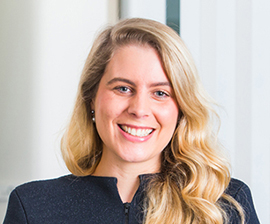- ExpertiseMenuMenuMenuMenu
- Team
- CareersMenuMenu
- News and insights
- On demand
- Training services
- Events
We previously reported on the draft taxation determination 2018/D3 released by the ATO. That draft set out the view of the ATO that a ‘trust split’ may trigger CGT consequences. Click here for that publication.
Although the ATO has admitted there is no case law dealing directly with the implications of a trust split, the comments made by the full Federal Court in its recent decision in the Aussiegolfa DomaCom case could provide an indication as to how the courts may treat trust splitting.
That case involved two self-managed superannuation funds and another related investor making an investment in a large investment trust operated by an AFSL holder. The investment in the larger trust was subsequently allocated to a smaller sub-trust utilising terms contained within the constitution of the trustee for the larger trust.
The Court was required to determine whether the specific rights, obligations and restrictions associated with the allocation of the investment to the sub-trust resulted in the creation of a separate trust.
Interestingly, the Court confirmed a separate trust existed for the following reasons:
These factors relied on by the Court are similar to the factors outlined by the ATO in its recent draft determination 2018/D3.
This case supports that, where existing trust relationships are further characterised or restricted, or assets set aside on specific terms, there is a risk that a new trust may be created.
While this case provides an indication of the Court’s approach to the creation of new rights within an existing trust, each case will inevitably fall on its own facts and specific circumstances.
Holding assets in a discretionary trust is a common and often highly effective structuring option.
However, passing the benefit of the assets in discretionary trusts to the next generation is not so straightforward as no beneficiary of a discretionary trust has a defined entitlement. Trust splitting was one way of addressing this issue.
As trust splitting will now likely give rise to adverse tax consequences given the ATO’s position, it is necessary to consider the other options, including:
This publication is for information only and is not legal advice. You should obtain advice that is specific to your circumstances and not rely on this publication as legal advice. If there are any issues you would like us to advise you on arising from this publication, please let us know.
Subscribe to our interest lists to receive legal alerts, articles, event invitations and offers.





Cooper Grace Ward acknowledges and pays respect to the past, present and future Traditional Custodians and Elders of this nation and the continuation of cultural, spiritual and educational practices of Aboriginal and Torres Strait Islander peoples.
Fast, accurate and flexible entities including companies, self-managed superannuation funds and trusts.